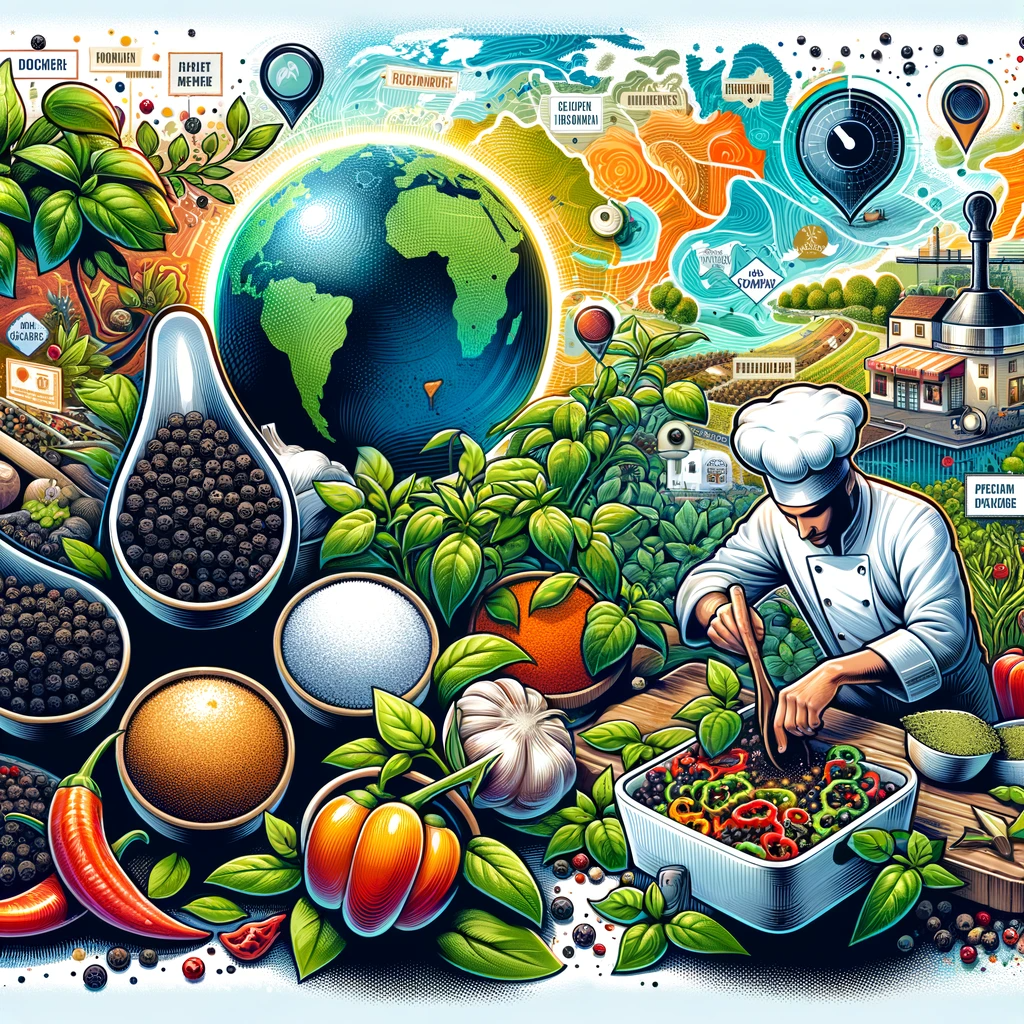Discovering the Versatile and Flavorful World of Pepper in Indian Cooking
When it comes to Indian cuisine, the use of spices is a defining characteristic. Among the many spices that grace the kitchen shelves, pepper stands out as a true gem. Not only does it add a distinct flavor to dishes, but it also offers a range of health benefits. In this article, we will delve deep into the world of pepper in Indian cuisine, exploring its different forms, culinary applications, and its role in various spice blends.
The Importance of Pepper in Indian Cooking
A Brief Introduction to Pepper
Pepper, scientifically known as Piper nigrum, is native to the southern regions of India and has been cultivated and traded for centuries. It comes in various forms, each with its unique flavor profile, aroma, and culinary uses. Pepper is a staple in Indian kitchens and is used in both whole and powdered forms.
Flavor Profile of Pepper
Pepper is known for its bold, pungent, and slightly spicy flavor. The heat it imparts can vary depending on its form, with black pepper being the spiciest, white pepper being milder, and green pepper offering a fresh, zesty note.
Health Benefits of Pepper
Pepper is not just a flavor enhancer; it also offers a range of health benefits. It is a rich source of antioxidants and has anti-inflammatory properties. Pepper has been used in traditional medicine for its digestive, respiratory, and antibacterial properties.
Varieties of Pepper in Indian Cuisine
Black Pepper
The King of Spices
Black pepper is the most commonly used variety in Indian cooking. It is made from dried unripe green berries, which turn black when they are sun-dried. Known as the “king of spices,” black pepper is used in a wide range of dishes, from curries and marinades to chutneys and pickles. It adds a bold and spicy kick to dishes.
White Pepper
Mild and Subtle
White pepper is created from ripe red berries with the outer layer removed. This process gives it a milder flavor compared to black pepper. White pepper is often used in dishes where the dark specks of black pepper would be visually distracting, such as in white sauces, soups, and creamy gravies.
Green Pepper
Fresh and Zesty
Green pepper is made from unripe berries that are freeze-dried or preserved in brine. It has a fresher and less spicy taste compared to black and white pepper. Green pepper is used in salads, stir-fries, and as a garnish to add a zesty, crunchy element to dishes.
Pepper in Indian Spice Blends
Garam Masala
The Warming Spice Blend
Garam masala is a quintessential Indian spice blend that features black pepper along with other spices like cinnamon, cloves, cardamom, and cumin. It adds warmth and depth of flavor to dishes like biryani, kebabs, and stews.
Rasam Powder
A Tangy Tonic
Rasam is a South Indian soup known for its tangy and spicy flavor. Rasam powder, which includes black pepper, cumin, coriander, and other spices, is a key ingredient in making this flavorful soup.
Chaat Masala
The Tangy Street Food Spice
Chaat masala is a blend of various spices, including black salt, cumin, and, of course, black pepper. It is used to enhance the taste of street food snacks like chaat, pani puri, and bhel puri.
Tips for Using Pepper in Indian Cooking
- Freshness Matters: Always use freshly ground pepper for the best flavor. Whole peppercorns retain their flavor longer than pre-ground pepper.
- Balance the Heat: Adjust the amount of pepper according to your heat preference. Remember that a little goes a long way, especially with black pepper.
- Experiment and Explore: Pepper can be used in a wide range of dishes, from savory to sweet. Don’t hesitate to experiment and discover new flavor combinations.
Conclusion
Pepper is not just a spice; it’s an integral part of Indian cuisine. Its versatility and flavor make it a must-have in any Indian kitchen. Whether you prefer the boldness of black pepper or the subtlety of white pepper, incorporating this spice into your cooking will elevate your dishes to a whole new level. So, go ahead, embrace the world of pepper, and embark on a culinary journey through the diverse and flavorful landscape of Indian cuisine.
